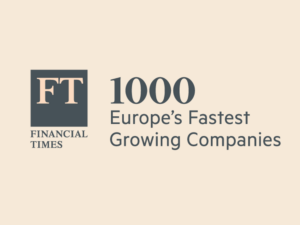 The absence of a British company – for the second year running – in the Thomson Reuters top 100 list of global innovators should give us all pause for thought.
The absence of a British company – for the second year running – in the Thomson Reuters top 100 list of global innovators should give us all pause for thought.
It comes as no surprise that the government fears that Britain, the country and people who’ve brought the world the jet engine, television, the world wide web and float glass, is now lagging behind the rest of the developed world in failing to deliver where we once ruled supreme.
In the last 20 years, Britain’s manufacturing output has moved ‘upmarket’, becoming more dependent on high-tech products many of which are reliant on robust intellectual property.
This has prompted the government to encourage more investment in research and development by offering financial incentives in the form of tax credits which can benefit small and large companies alike.
For an SME (defined as having fewer than 500 employees and/or turnover less than €100m), this can make a significant difference to the bottom line: tax credits give 225% tax relief on costs generated from R&D activity.
In other words, allowable R&D costs of £100 will generate £125 tax relief against taxable income.
As you might expect, what constitutes R&D costs are carefully but fairly generously defined and include PAYE-assessed staff costs (including NIC, but not benefits), consumables and transformable items, software specific to the project, sub-contracted R&D (SMEs only), and externally-provided agency workers.
For this purpose, R&D is quite widely defined beyond the original guidelines of ‘a project that seeks to achieve an advance in science or technology…through the resolution of scientific or technological uncertainty’ and can include an extension of overall knowledge or capability; the creation of a process; a material device, product or service.
Therefore, it is certainly worth seeking advice to ensure that all R&D related costs are accounted for as it is easy to overlook qualifying items such as capitalised R&D, and externally provided workers or subcontractors; or the administrative requirements, such as applying within the two year time limit.
A more recent government initiative is the Patent Box which was introduced in April 2013.
In essence, this allows for 10% corporation tax to be levied on income generated by a patented product, subject to specific criteria.
This also applies to income generated by products or services of which only a component part is patented.
This latter qualification has caused controversy in Europe, leading to complaints of discriminatory tax competition by Germany. UK officials are anxious to resolve the situation as quickly as possible, not least because it is proving successful: GSK has established its first new research facility in the UK for 40 years on the back of this scheme creating 1,000 jobs.
Given that there is a favourable tax regime for small companies investing in new designs, it is well worth auditing of your intellectual property, establish what you have granted and pending, ensure that you have legal ownership and review any other products, or parts thereof, that might be patentable.
With care, and not using any avoidance schemes, next year’s tax bill may be more palatable.
Barry Sankey, Consultant Solicitor at Wright Hassall






